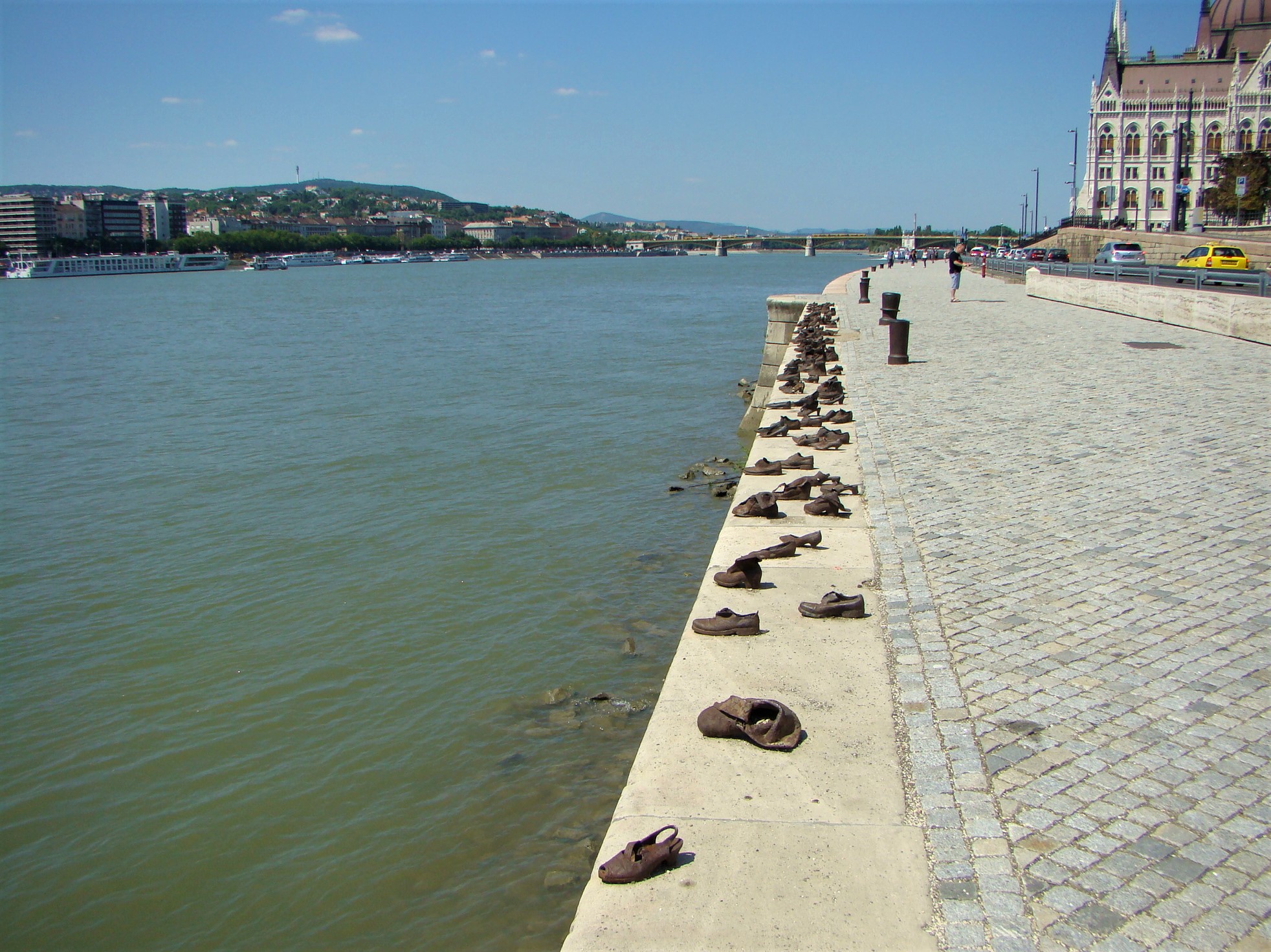It started as a leisurely stroll along the Danube on a bright summer’s day in Budapest. The walk revealed the most poignant of Holocaust memorials.
A few hundred feet in the distance rises the impressive Hungarian Parliament Building, sending a message that this city once was a center of world power.
Coming into view just ahead is a scattering of brown objects. They don’t move with the breeze. They are not litter.
This surprising travel find, unlike the imposing structures of Budapest’s Kossuth Square, bears witness to a time when evil reigned. Jews were herded into ghettos with others the regime deemed undesirable. Some who didn’t die of sickness or starvation met a despicable fate right here on the banks of the Danube.
A few steps closer, and the objects in this fateful place come into sharp focus. These are cast-iron sculptures of shoes. Various styles and sizes are anchored into the concrete.
It’s a curious and unusual sight. It’s also one of the most powerful memorials to be found anywhere.
Some of the darkest days of the Second World War came near the end of the conflict. In Budapest, the brutal winter of 1944-45 saw many in the city’s ghetto struggling just to survive the cold. But there were greater threats at hand.
In December and January, scores of unarmed victims met a horrific fate. The fascist Arrow Cross party, in power and in sympathy with Nazi occupiers, escorted men, women, and children from the ghetto to the edge of the Danube.
It was a most convenient place to carry out mass executions.
Ammunition was in short supply. Only one bullet sent victims into the icy waters, where hypothermia quickly finished what the gunshot initiated. The water also swept away the bodies.
With critical shortages of almost everything, nothing of went to waste. Footwear commanded handsome prices on the black market. So the Arrow Cross murderers first barked orders for the removal of all shoes. With the atrocities accomplished, all that remained here on a typical day was a scattering of shoes.
Closer examination of the iron sculptures reveals footwear that belonged to little children as well as adult laborers. Work boots lay alongside high heels. In all, 60 pairs are scattered across about 130 feet of embankment.
Sculptor Gyula Pauer created this touching scene, in close collaboration with filmmaker Can Togay. Dedication day: April 16, 2005, exactly 61 years from the initial deportations of Hungarian Jews to the ghetto.
Visitors don’t find large signs or roped-off lines. This open, much understated “Shoes on the Danube Bank” memorial needs no such fanfare. There is a simple engraved plaque set in stone that reads “To the memory of the victims shot into the Danube by Arrow Cross militiamen in 1944-45.”
Had these victims managed to survive for only one or two more months, they would have witnessed the removal of the Arrow Cross party from power in February 1945, as Russian troops occupied Budapest.
The Shoah Resource Center of Yad Vashem reports many in Hungary’s Arrow Cross party leadership stood trial as war criminals, while rank-and-file members simply resumed civilian life.
This monument ingeniously inspires visitors to learn such details. It sends thousands to their smartphones and other Internet-connected devices for answers.
It’s a lot to think about for people who discover this surprising travel find in Budapest — people who started out taking a carefree afternoon stroll and wound up thinking about one of the most evil injustices of modern times.

